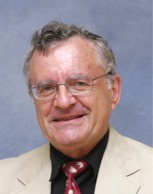You are currently browsing the tag archive for the ‘Supreme Court’ tag.
Ruth Bader Ginsburg – Words Matter
By Shlomo Maital
Ruth Bader Ginsburg in Israel
Do words really matter?
They do indeed. Especially when written by a diminutive Jewish woman, a Justice of the US Supreme Court for an entire generation.
Ruth Bader Ginsburg said this, about her class with famous Russian novelist Vladimir Nabokov, at Cornell University: (from a blog by Frances Katz):
“[Vladimir] Nabokov, changed the way I read and the way I write,” Ginsburg said. “Words could paint pictures, I learned from him. Choosing the right word, and the right word order, he illustrated, could make an enormous difference in conveying an image or an idea.”
She also says she always employs several of the lessons she learned in his class: “I seek the right word and word order,” she explained. “ And I use the ‘read aloud’ test to check whether I have succeeded.”
Rulings and dissenting opinions are first read aloud in court before being distributed to the public, so the ‘read aloud test’ helps her be certain the language be clear enough to articulate legal arguments but still be understood by ordinary citizens.
Her use of language is clear and direct. She redefines the issue and makes her argument. She calls on those who agree with her to push for change. She did not call on Congress directly, use inflammatory language or rhetorical flourishes. She chose her words carefully to make sure there was no misunderstanding her call for action.
One of her law clerks said yesterday on National Public Radio, that he worked hard on a legal opinion, and wrote 10 pithy pages. RBG complimented him, then took his draft and boiled it down to 3 and one half even more pithy pages, focused clear and powerful.
Words to matter. RBG’s words changed America and the world. She used the phrase “gender discrimination”, not “sex discrimination”, because the latter phrase, she knew, would not speak to the male Justices.
You CAN change the world, with the right words. And with stubborn persistence, and with, as she put it, the ability to “disagree without being disagreeable”.
An Innovation ‘Formula’: X + Y
By Shlomo Maital
Some 158 years ago, on March 30, 1858, Hymen Lipman was granted a patent for his invention of a pencil with a built-in eraser (U.S. Patent # 19,783). Lipman was a stationery entrepreneur. He invented many practical devices that made office work easier and faster — for instance, putting glue on the flap of an envelope.
Patents require things that are “novel” and “non-obvious”. Erasers existed. Pencils existed (since 1565, when a Swiss scientist filled a wood cylinder with graphite, found to be better for marking than lead. (Apparently, until the 1770s, pencil marks were erased using balled-up bread!). Isn’t it obvious that pencils need erasers on them? Yes – but only after someone thinks of it and does it.
Lipman understood that innovation requires two things: novelty and usefulness. Putting an eraser on a pencil was highly useful. Lipman sold his patent in 1862 for the enormous sum of $100,000 ($2 million in today’s money) to Joseph Reckendorfer, in 1862. Soon, the patent was infringed by A.W. Faber, the pencil company, and Rekendorfer sued. The U.S. Supreme Court said, no infringement! The eraser pencil was nothing new. All Lipman had done is combine an eraser (X) with a pencil (Y), two known technologies.
The court got it totally wrong. A great many inventions involve combining in unique ways, existing things. X + Y is a known, proven formula for innovation. Take for instance one of my former students Do Hyun Kim, a Korean engineer with LG, who in 1985 combined a VCR with a TV, in a single box, called it Viewmax – and it became a huge hit. Was this an innovation? Of course.
Take two existing things. Combine them in a unique way. You have an innovation, if it is useful for lots of people. X + Y is innovative, even if the Supreme Court doesn’t think so. Putting WiFi Internet connections into appliances — innovation? Internet of Things? of course.
Source: Haaretz daily, March 30, p. 4.



